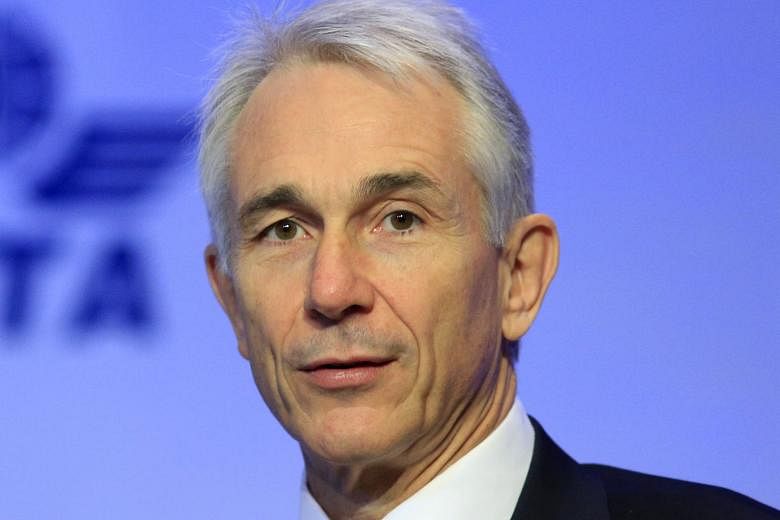South-east Asian carriers such as Singapore Airlines (SIA) are being hit hard by budget and Middle Eastern airlines but the situation is not totally bleak, says the head of a global airline body.
Even though profits are increasing for global carriers collectively, airlines based in this region are seeing "thin profits", noted the chief executive and director-general of the International Air Transport Association (IATA), Mr Tony Tyler.
The strong US dollar and aggressive competition from low-cost carriers in the region - which now have a significant market share, with 54 per cent of intra-Asean travel - have had an impact.
For those travelling further afield, "the very strong competition on long-haul traffic from the Gulf carriers is also a factor", he added.
"Profitability for airlines in this region is not strong at all," said Mr Tyler, speaking to reporters yesterday ahead of an aviation summit today. Still, all is not lost, he stressed, adding that full-service airlines must "play on their strengths", which include quality service and strong branding.
SIA's approach of having a portfolio of carriers to serve different market segments is also a good move, Mr Tyler pointed out.
"It seems a sensible strategy... SIA is a well-run carrier and very much a force to reckon with in the global aviation industry. It punches well above its weight and I'm sure they have done a good job of taking stock of the situation."
Apart from the premium parent carrier and regional arm SilkAir, SIA owns Scoot, which operates long-haul budget flights. SIA also announced recently that it has succeeded in acquiring more than 90 per cent of regional budget carrier Tigerair. The plan is to delist the carrier and align its operations more closely with those of the other SIA carriers for operational efficiency.
To meet the challenges ahead, airlines in the region will also have to continue to manage their costs and push ahead with innovation and productivity initiatives, including operating new and more efficient planes, Mr Tyler said.
Mr Tyler, who will step down as IATA head in June after being at the helm for about five years, said that it has been a good run.
"I regret nothing... though I am a little disappointed that we have not made more progress in improving the whole passenger screening experience at airports," he said, referring to the hassle of different types of passenger screening checks at different airports.
However, he is glad about the progress made in other areas such as safety and security.
"I don't take personal credit for this but I think the industry deserves congratulations," he said.
The IATA will unveil its latest safety indicators at the Singapore Airshow Aviation Leadership Summit today.


